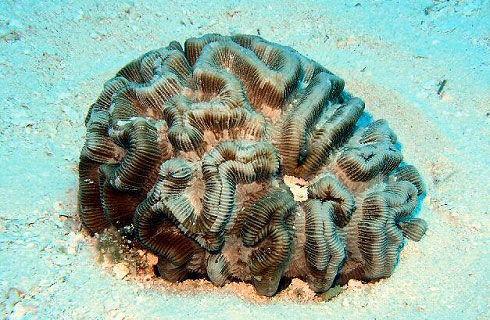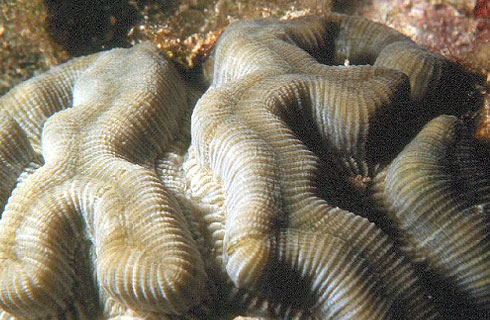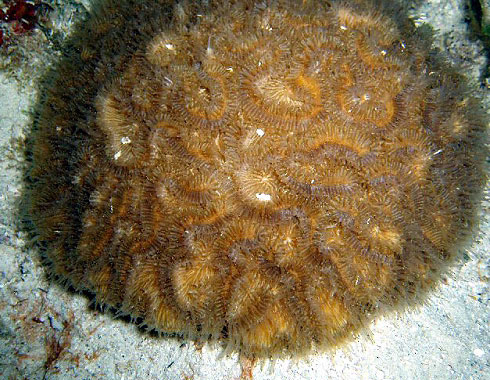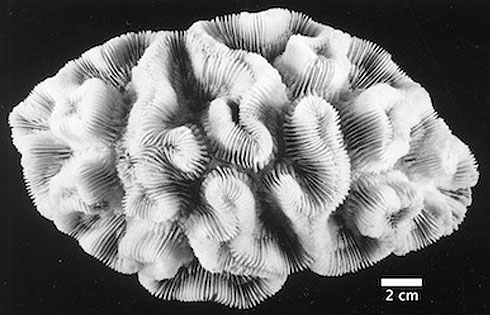Manicina areolata (rose coral)
Colonies of Manicina areolata coral are less than 10cm in diameter, and are either dome-like, or shaped like an ice cream cone when viewed from the side.

Manicina areolata living in a seagrass meadow.
They are free living or, when small, attach to small sediment grain, mollusc shells, or calcareous algae.
If a colony becomes overturned by a fish or current it can right itself and avoid being smothered by sediment.
Species detail
-

Taxonomy
Find out what shapes this ancient rose coral, and why many of its relatives became extinct.
-

Habitat
Manicina areolata is widespread across the Caribbean region and is a reef coral. But it rarely inhabits coral reefs. Find out where this coral prefers to live.
-

Reproduction
Manicina areolata has both male and female sexual organs - it is a simultaneous hermaphrodite. Find out how it reproduces, and why it releases its larvae according to the phase of the moon.
-

Behaviour
Manicina areolata is a free-living coral that lives loose on the sea floor. It is one of only a few corals that are actively mobile. Find out how it flips itself upright when it gets overturned.
-

References
Get more information on Manicina areolata.
Images

Manicina areolata.

Manicina areolata.

Manicina areolata.

Manicina areolata.

Manicina areolata.
About the author
Toolbox
Glossary
Corallite
The skeleton of a coral polyp.
Columella
Small column-like structure.
Meandroid
Colony composed of corallites in linear series within the same wall.
Mesenteries
Fleshy septa connected to an oral disk. Mesenteries occur in pairs and flow like curtains.
Septa
Partitions between two cavities.

